
Welcome! Making the decision to explore a plant-based diet is a wonderful step toward vibrant health at any age, and it’s especially beneficial in our later years. Perhaps you’re motivated by your heart health, a desire for more energy, or simply curiosity about a new way of eating. Whatever your reason, you’ve come to the right place.
This guide is designed to be your trusted companion, walking you through the process of shifting your diet safely, enjoyably, and sustainably. We’ll move at a gentle pace, focusing on adding more healthy foods rather than feeling deprived. This isn’t about perfection; it’s about progress and feeling your best. Let’s begin this exciting journey together.

Before You Begin: The Most Important First Step
Before changing your diet in any significant way, it is absolutely essential to speak with your healthcare team. This is the most important safety check you can do for yourself.
Why this is crucial for seniors: As we age, our bodies have unique nutritional needs. You may be managing existing health conditions like high blood pressure, diabetes, or osteoporosis, or taking medications that can interact with certain foods. A sudden dietary shift without medical guidance can affect your blood sugar, blood pressure, and medication effectiveness.
How to do it right:
- Schedule an Appointment: Make an appointment with your primary care doctor or, even better, a registered dietitian who specializes in senior nutrition. Let them know you are planning a transition to a plant-based diet.
- Ask Key Questions: Go to your appointment prepared. Here are some questions you might ask:
- “Based on my health history and current medications, are there any risks I should be aware of when transitioning to a plant-based diet?”
- “Which specific nutrients, like B12 or calcium, should I pay extra attention to?”
- “Can you recommend a multivitamin or specific supplements that are right for me?”
- “Can we do a baseline blood test now and another in a few months to track my progress?”
This simple conversation provides you with a personalized roadmap and a safety net, ensuring your healthy eating plant-based journey starts on the strongest possible foundation.

Understanding “Plant-Based”: It’s a Spectrum, Not a Switch
One of the biggest misconceptions is that you must go from eating meat one day to being a strict vegan the next. This “all-or-nothing” thinking can be overwhelming and is often why people give up. The reality is much more flexible and forgiving.
Why this mindset helps: Viewing this as a gradual process removes the pressure. It allows you to find a style of eating that feels good for your body and fits your lifestyle. You are in control.
How to find your style:
- Plant-Forward or Flexitarian: This is a wonderful starting point. You consciously focus on eating more plants, but still occasionally include small amounts of meat, poultry, fish, or dairy.
- Vegetarian: You eliminate meat, poultry, and fish, but may still include dairy products and eggs.
- Vegan: You eliminate all animal products, including meat, poultry, fish, dairy, eggs, and often honey.
For most people beginning a vegan transition after 60, starting with a plant-forward approach is the most successful and enjoyable path. You can always adjust as you become more comfortable.
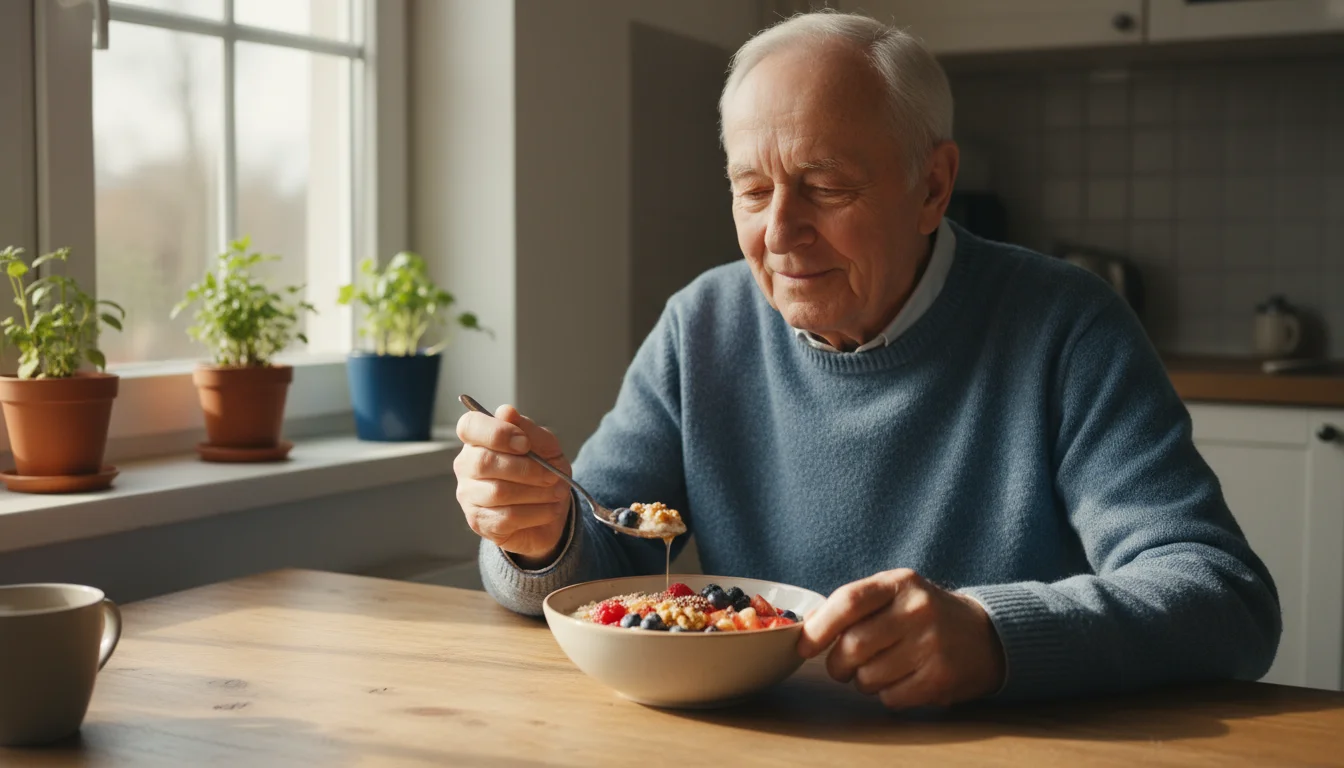
Your Gentle Transition Plan: A Step-by-Step Guide
Ready to get started? The key is to go slowly. A gradual transition gives your digestive system time to adapt to more fiber and gives you time to discover new foods and recipes you love. Here is a simple, four-step process to follow.
-
Step 1: Start with One Meal a Day
Why this works: It’s a small, manageable change that builds immediate confidence. Breakfast is often the easiest meal to start with.
How to do it: For one week, make your breakfast fully plant-based. Instead of eggs and bacon, try oatmeal with berries and walnuts. Instead of yogurt with honey, try a smoothie with plant-based milk, spinach, and a banana. You don’t have to change lunch or dinner yet—just focus on mastering one meal.
-
Step 2: Introduce “Meatless Mondays” (or Any Day!)
Why this works: Dedicating one full day to plant-based eating helps you think about what a full day of meals looks like. It encourages you to try new recipes for lunch and dinner.
How to do it: Pick one day of the week to eat entirely plant-based. A simple “Meatless Monday” could look like this:
- Breakfast: Oatmeal with fruit and nuts.
- Lunch: A hearty lentil soup with a slice of whole-grain bread.
- Dinner: Black bean burgers on a whole-wheat bun with a side salad.
-
Step 3: Reimagine, Don’t Remove, Your Favorite Meals
Why this works: You don’t have to give up the flavors and meals you love. This step makes the diet feel familiar and less like a sacrifice. It’s a key part of long-term success for a plant-based diet for seniors.
How to do it: Think of a meal you enjoy and give it a plant-based makeover.
- Love Spaghetti Bolognese? Swap the ground beef for cooked lentils or finely chopped mushrooms.
- Enjoy Tacos? Use seasoned black beans or crumbled tempeh instead of ground meat.
- Crave Chili? Make it with kidney beans, pinto beans, and black beans, and add extra vegetables like corn and bell peppers.
-
Step 4: Crowd Out, Don’t Cut Out
Why this works: This is a positive psychological trick. Instead of focusing on what you’re removing, you focus on what you’re adding. This feels abundant, not restrictive.
How to do it: When you prepare a meal, mentally fill half your plate with vegetables first. Add a serving of whole grains (like brown rice or quinoa) and a plant-based protein (like beans or tofu). You’ll find there is naturally less room on the plate for animal products. Over time, the plant-based foods will become the star of the show.

Crucial Nutrients: Your Plant-Based Safety Checklist
When you reduce or eliminate animal products, you need to be mindful of getting certain essential nutrients from plant sources. This is one of the most important parts of senior nutrition tips for a plant-based diet. Always discuss supplementation with your doctor.
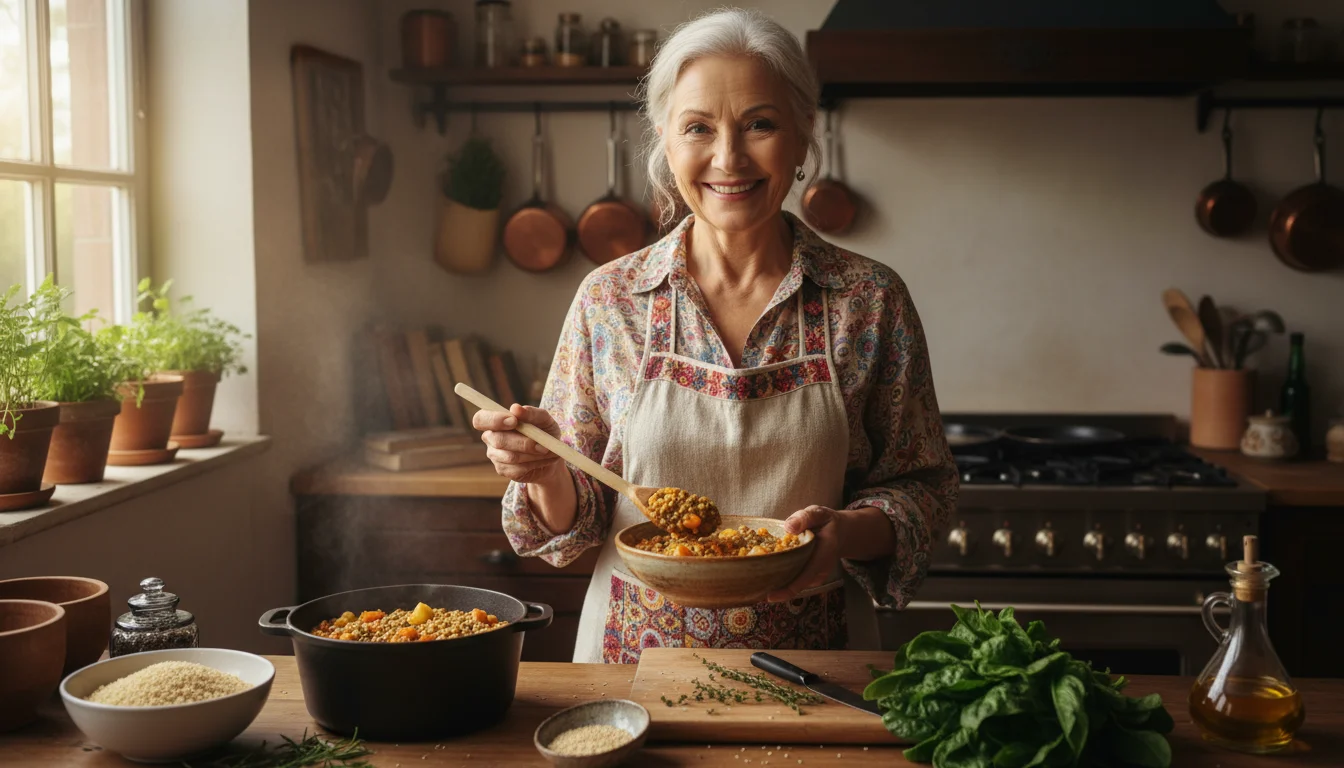
Protein: For Muscle Strength
Why it’s important: As we age, we naturally lose muscle mass (a condition called sarcopenia). Adequate protein is vital to help preserve strength, mobility, and balance.
How to get it: Aim to include a good protein source with every meal. Excellent plant-based options include:
- Legumes: Lentils, chickpeas, black beans, kidney beans. They are fantastic in soups, stews, and salads.
- Soy Products: Tofu, tempeh, and edamame are complete proteins. Tofu is incredibly versatile and takes on the flavor of whatever you cook it with.
- Nuts and Seeds: Almonds, walnuts, chia seeds, and flaxseeds are great for snacking or adding to oatmeal and smoothies.
- Whole Grains: Quinoa is a complete protein, and other grains like oats and brown rice contribute as well.

Calcium and Vitamin D: For Bone Health
Why they’re important: This pair is the foundation of strong bones, helping to prevent osteoporosis and reduce the risk of fractures. They work as a team—Vitamin D is needed for your body to absorb calcium.
How to get them:
- Calcium: Fortified plant milks (almond, soy, oat), fortified orange juice, calcium-set tofu, broccoli, kale, and almonds are good sources.
- Vitamin D: Your body produces Vitamin D from sun exposure, but this becomes less efficient with age. Few foods naturally contain it. For this reason, many seniors—regardless of diet—need a supplement. Fortified plant milks and cereals can help, but please consult your doctor about a Vitamin D supplement.

Vitamin B12: For Nerve and Brain Function
Why it’s non-negotiable: Vitamin B12 is critical for healthy nerve function and preventing a type of anemia that can cause tiredness and memory problems. This vitamin is not found in plant foods.
How to get it: This is one area where you cannot rely on plants alone. The only reliable vegan sources are:
- Fortified Foods: Many plant milks, breakfast cereals, and nutritional yeast are fortified with B12. Read labels carefully.
- A B12 Supplement: This is the most reliable and recommended way for anyone on a mostly or fully plant-based diet to get enough B12. Ask your doctor for the correct dosage for you.
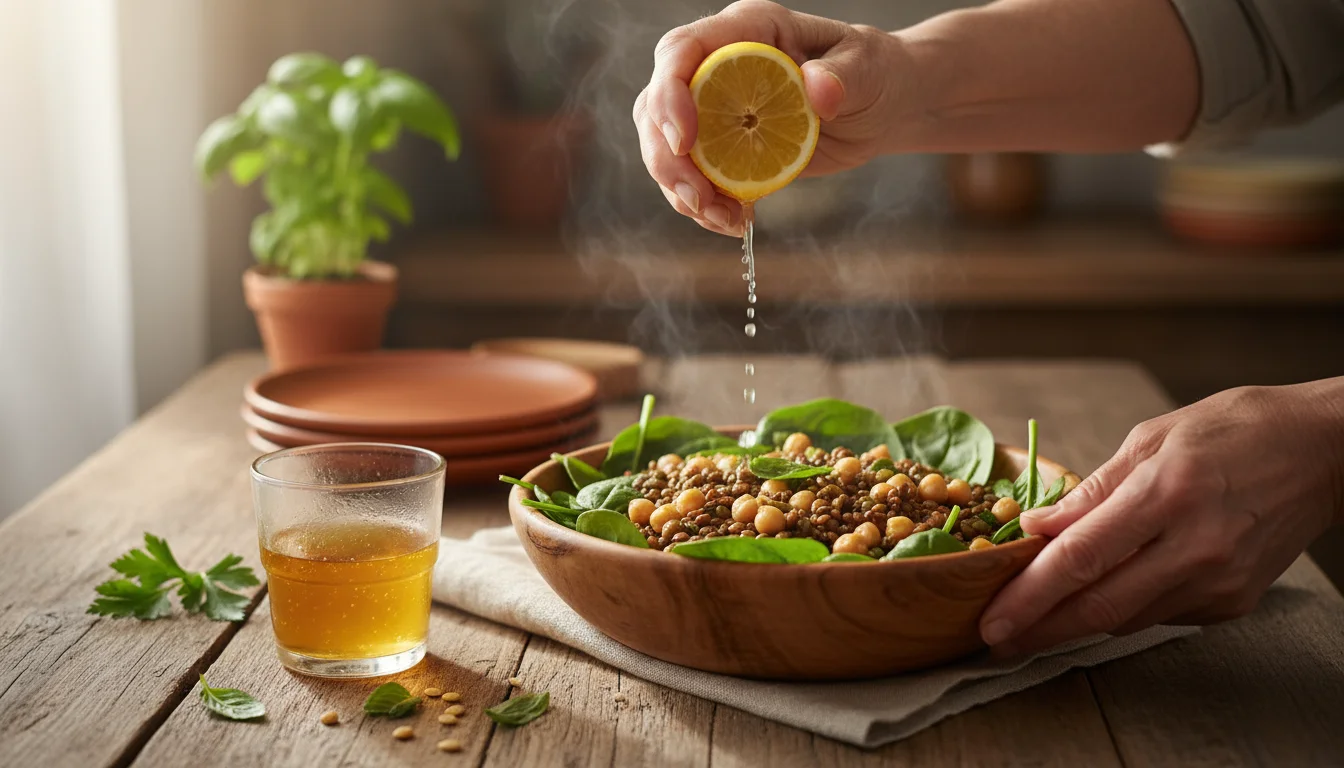
Iron: For Energy
Why it’s important: Iron helps create red blood cells that carry oxygen throughout your body. A deficiency can lead to fatigue, weakness, and shortness of breath.
How to get it: Plant-based iron is abundant! You can find it in lentils, chickpeas, beans, tofu, spinach, and fortified breakfast cereals.
- Pro Tip: Plant-based iron (non-heme iron) is absorbed better when eaten with a source of Vitamin C. So, squeeze some lemon juice over your spinach salad, or have a small glass of orange juice with your fortified cereal.
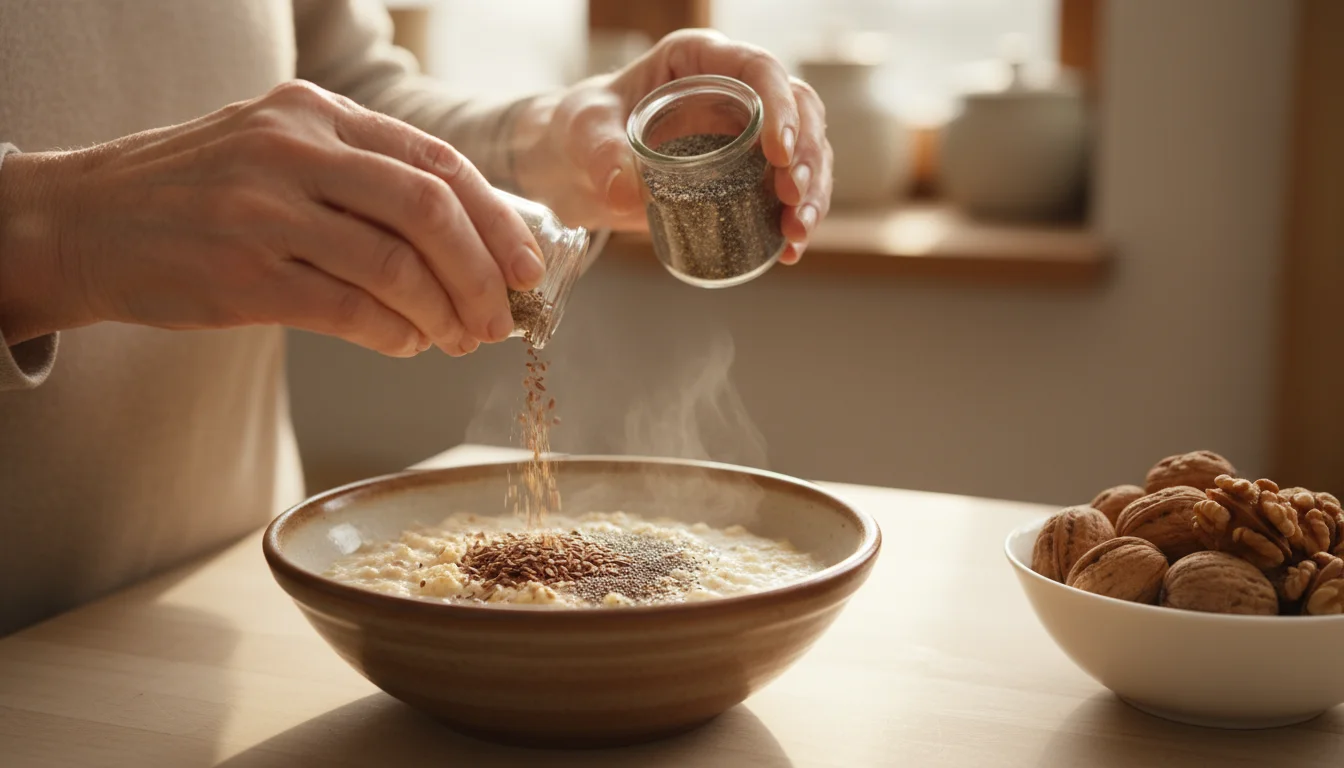
Omega-3 Fatty Acids: For Heart and Brain Health
Why they’re important: These healthy fats fight inflammation and are known to support cognitive function and cardiovascular health.
How to get them: While fatty fish is a common source, you can get plant-based omega-3s (called ALA) from:
- Ground Flaxseeds: Sprinkle on oatmeal or in smoothies.
- Chia Seeds: Make a simple chia pudding or add to water.
- Walnuts: A great snack or salad topping.
- Hemp Seeds: Another easy addition to salads and cereals.
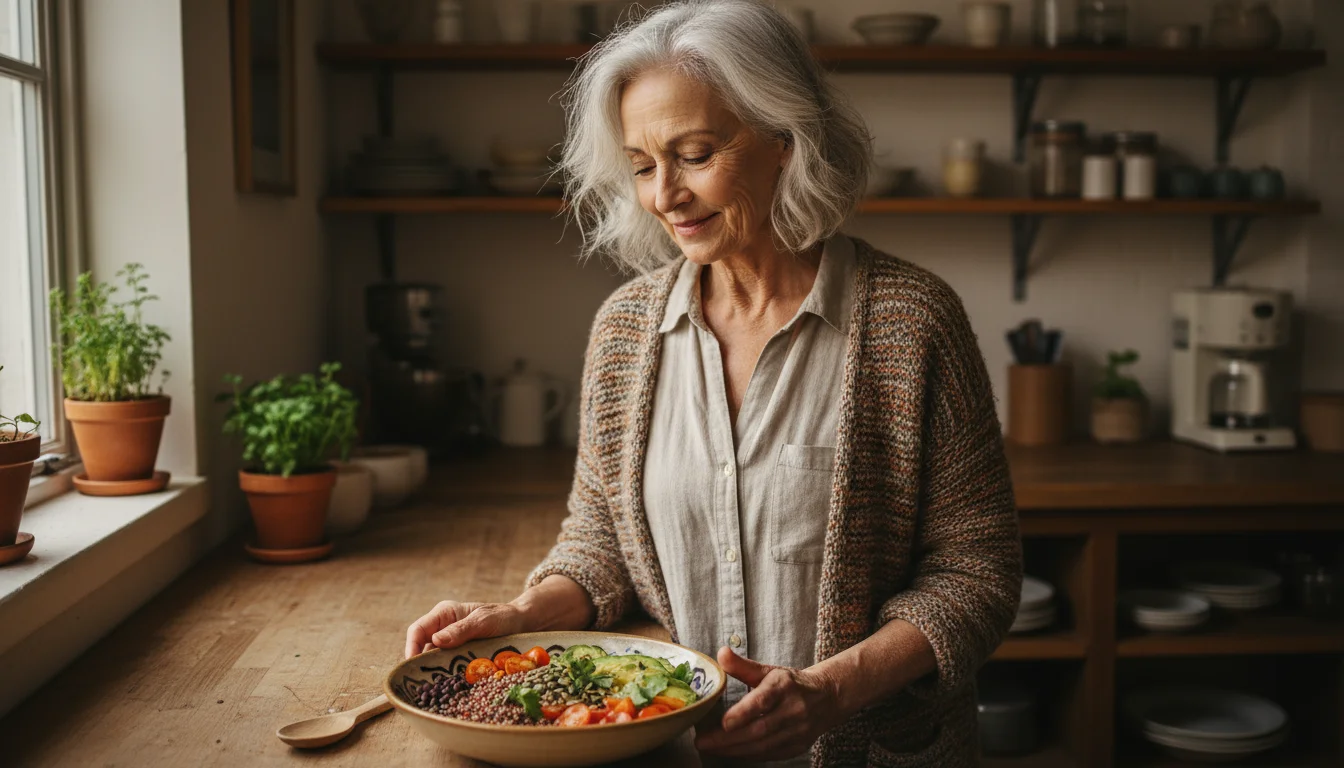
Conclusion: Be Patient and Proud of Your Journey
Making a shift toward a plant-based diet after 60 is a powerful, positive choice for your health and well-being. Remember that this is your journey, and it should be enjoyable. Start slowly, listen to your body, and don’t be afraid to experiment in the kitchen.
By consulting with your doctor, focusing on key nutrients, and taking it one step at a time, you are setting yourself up for success. Every plant-filled plate is a victory. Be proud of the wonderful commitment you are making to yourself and enjoy the vibrant health that follows.
For expert guidance on senior health and finance, visit Social Security Administration (SSA), Consumer Financial Protection Bureau (CFPB), Administration for Community Living (ACL), Eldercare Locator and AARP.
|
Fact-Checked Content
Our editorial team reviews all content for accuracy and updates it regularly. Learn about our editorial process →
|

















